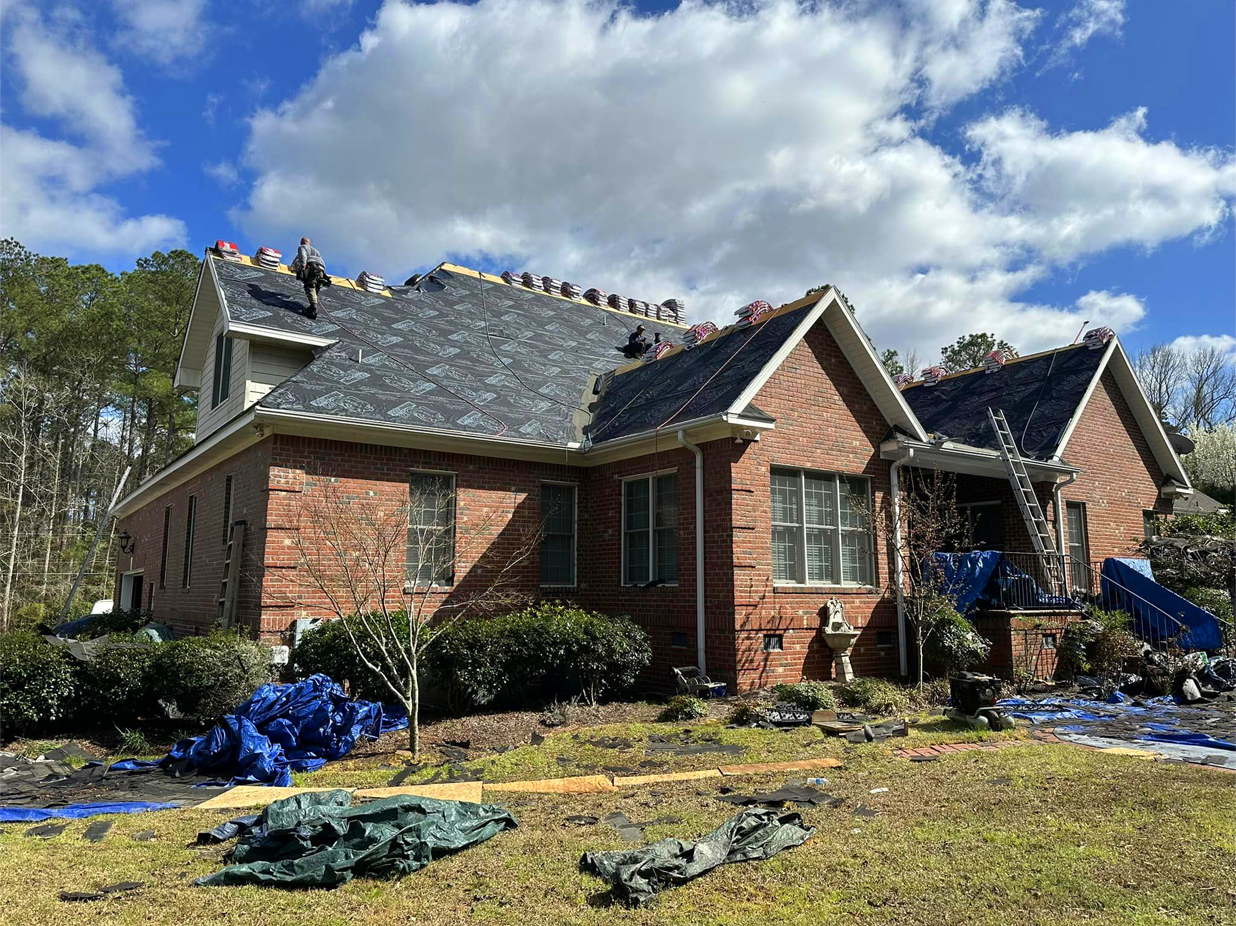
Roof Replacement vs. Repair: What Lexington Homeowners Should Know
Introduction
Your roof protects the entire structure of your home. When damage appears—whether from age, storms, or general wear—the decision becomes whether to repair problem areas or replace the roof entirely. For homeowners in Lexington, SC, where heat, humidity, and seasonal storms are common, making the right decision can affect long-term cost, energy efficiency, and home value. This guide outlines how to determine whether repair or replacement is the smarter choice.
How Roof Condition Affects Your Home
A roof does more than sit overhead. It prevents water intrusion, regulates indoor temperature, protects structural components, and influences curb appeal. When a roof begins to fail, signs can appear slowly or suddenly. Addressing early issues prevents bigger, more costly problems like rot, interior leaks, or mold.
Situations Where Roof Repair Makes Sense
Repairs are appropriate when the roof is mostly in good condition and isolated issues need attention.
Short intro — now breaking into subsections:
Minor Shingle Damage
Small sections of missing or lifted shingles can often be replaced individually to restore protection.
Localized Leak or Flashing Issue
If water entry is limited to a specific point—like around a vent or chimney—resealing and replacing flashing can solve the problem.
Recent Roof with Isolated Wear
If the roof is relatively new and structurally sound, but wear appears in a small area, repair is cost-effective and reasonable.
When Roof Replacement Is the Better Option
Replacement is the smart investment when damage is widespread or the roof has reached the end of its useful life.
Roof is more than 15–20 years old
Shingles are curling, cracking, or missing in multiple areas
Persistent leaks return even after repairs
Water stains appear on ceilings or attic wood framing
Moisture, mold, or insulation damage is present
Replacing the roof addresses underlying system integrity, not just surface issues.
How to Decide Between Repair and Replacement
This is a decision-making process, so we’ll break it down in steps:
Assess the age of your current roof.
Older roofs are more likely to need replacement rather than patching.Check for visible widespread wear.
Damage across multiple sections usually indicates deeper deterioration.Look inside the attic for moisture signals.
Wet insulation, stains, or wood discoloration suggest a system-wide issue.Consider future plans for the home.
If you plan to stay long-term, replacement may offer better value.Request a professional inspection.
A local builder or roofing professional identifies hidden structural conditions the surface doesn’t show.
Benefits of a Full Roof Replacement
This section benefits from bullet formatting.
Long-term reliability because the entire system is refreshed
Better energy efficiency through improved insulation and ventilation
Higher resale value due to updated exterior protection and appearance
Stronger weather resistance against wind, storms, and humidity common in Lexington
Unified material lifespan so repairs are less frequent over time
Why Local Climate Matters in Lexington SC
Lexington weather includes warm summers, sudden storm patterns, and seasonal humidity. These conditions can accelerate roof wear. Materials that perform well in coastal or humid regions—like architectural shingles or metal roofing—often last longer and maintain structural stability better than cheaper alternatives.
Frequently Asked Questions
How long does a typical roof last in Lexington SC?
Most roofs last around 15–25 years, depending on installation quality and material type.
Can I place new shingles over old shingles instead of replacing the roof?
It’s possible, but not always recommended. Layering can hide underlying problems and reduce long-term durability.
How do I tell if a roof leak is serious?
If staining appears on interior walls or ceilings, or if attic insulation feels damp, the issue may be structural rather than surface-level.
Does homeowner’s insurance cover roof repair or replacement?
Coverage depends on the cause. Storm and impact damage may be covered; wear due to age generally is not.
Will a roof replacement disrupt daily life?
Most replacements are completed in a few days. Noise is temporary, but the home remains livable throughout.
Conclusion
Choosing between repairing or replacing your roof comes down to condition, age, and long-term goals for your home. Repairs make sense for localized or minor damage, while a full replacement provides lasting protection and value when wear is widespread. Understanding the signs and considering the climate and structure of your Lexington home helps ensure the right investment at the right time.